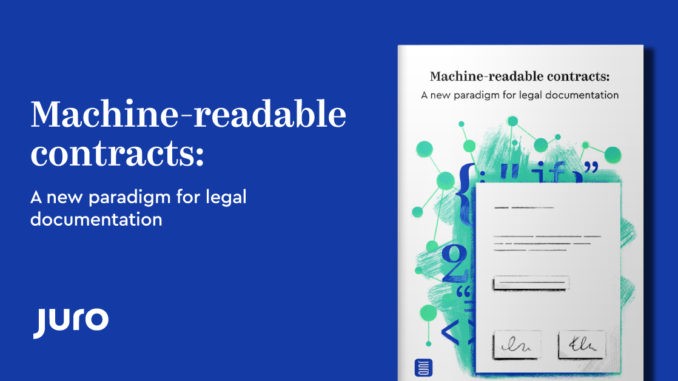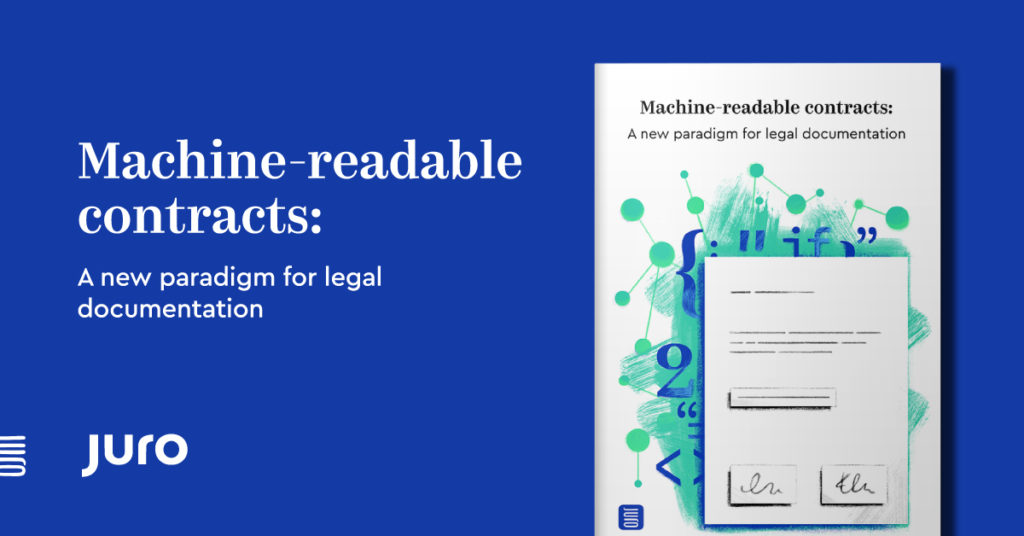
New Juro Whitepaper: Machine-Readable Contracts – A New Paradigm For Legal Documentation
By Richard Mabey, CEO, Juro
For a piece of software that wasn’t designed with contracts in mind, Microsoft Word has done rather well in the legal market. So well, in fact, that close to 100% of the world’s contracts, and the business relationships they define, are governed by word processors and PDFs.
However, wrestling with trying to collaborate on legal documents in Word, email and PDF is the opposite of a collaborative experience. The IACCM found that 83% of people are dissatisfied with the contract process. In fact, it’s painful enough that I decided to co-found Juro. There are many reasons for this pain, but a key issue is that Word files and PDFs are built from unstructured data.
Once a document is signed, usable data in the contract must be extracted after the fact. In short, unless you read a contract from start to finish (and lawyers are not known for their brevity), you don’t know what the key points are. Searchability is a non-starter, which makes contract management at scale spectacularly inefficient.
In recent years, developments in AI contract review have given people a way to extract some data from their documents, and attempt to tag and structure it. The problem is that this process is still based on unstructured data. Instead of creating documents you can’t read, then using AI to solve the data problem you’ve created for yourself and calling it progress, why don’t you just stop creating unstructured data, and make contracts machine-readable from the get-go?
This whitepaper explains the collaborative and analytical benefits that follow if we drag contract management into the modern era, as dynamic digital documents. Google docs has tried to solve this for Word documents, and next-generation platforms like Coda and Notion are doing the same with spreadsheets. By creating a machine-readable editor, custom-built for contracts, we want to do the same for legal documentation.
We explore the way data flows through the contract lifecycle, and the points at which that data is lost with the traditional Word-email-PDF workflow, as well as the modern workflow augmented by contract review. We explore the layers of data that live within a contract, and dig into the JSON editor we used to make Juro’s editor collaborative enough to handle redlining and commenting, but also conditional logic. Finally we look at the commercial upside that’s possible if we embrace machine-readable contracts.
We hope you find our latest whitepaper engaging – visit us online, or at the Legal Innovators conference on 11 October in London, to learn more.
Richard Mabey is the CEO and co-founder of Juro.
—
[Artificial Lawyer is proud to bring you this sponsored article from Juro.]

6 Trackbacks / Pingbacks
Comments are closed.